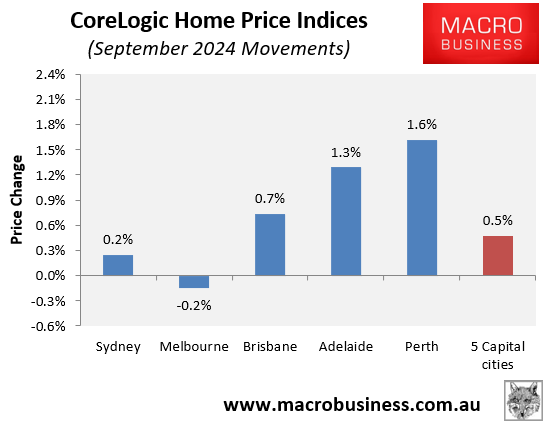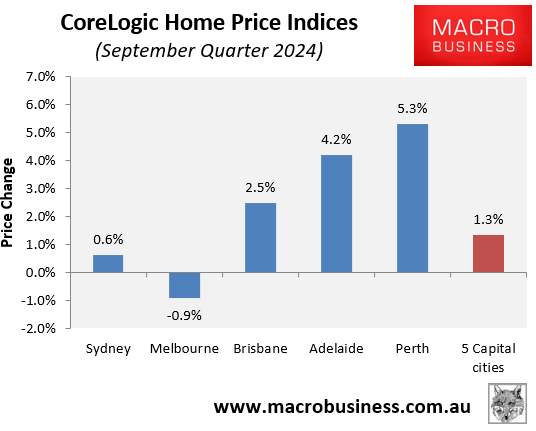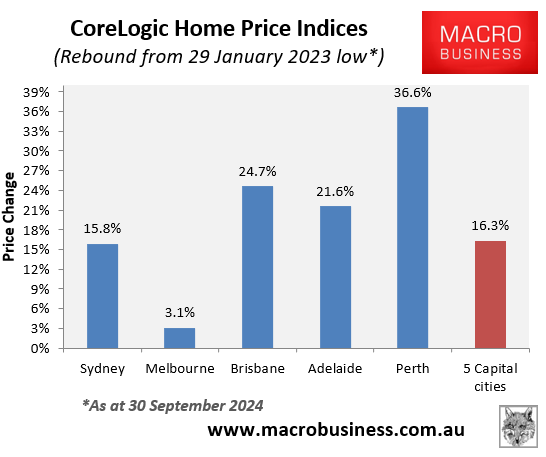CoreLogic’s daily dwelling values index, which measures value growth across the five major Australian capital city housing markets, rose by 0.5% in September:

As illustrated above, the 0.5% monthly growth was driven by Perth (1.6%), Adelaide (1.3%), and Brisbane (0.7%), whereas Sydney (0.2%) and Melbourne (-0.2%) recorded modest growth and falling prices, respectively.
Similar trends were evident during the September quarter, with values increasing by 1.3% at the aggregate level across the five major cities thanks to Perth (5.3%), Adelaide (4.2%), and Brisbane (2.5%).
By contrast, Sydney’s (0.6%) and Melbourne’s (-0.9%) value growth was softer and negative, respectively.

Since the beginning of the year, dwelling values have risen by 5.2% across the five major capital cities. Perth has led the way, with values surging by 18.0%. This is followed by Adelaide (11.2%) and Brisbane (10.2%).
By contrast, Sydney (3.5%) and Melbourne (-1.5%) have recorded low and negative growth, respectively.

Since bottoming in late January 2023, home values have risen by 16.3% across the five major capital cities.
Perth (36.6%) has recorded explosive growth, followed by Brisbane (24.7%) and Adelaide (21.6%). Sydney has also experienced solid growth (15.8%), whereas Melbourne’s values have remained fairly flat (3.1%).

Finally, the following chart shows the 28-day change in dwelling values across the five major markets:

As you can see, home value growth down the East Coast is now tracking well below the rest of the nation.
Most notably, Brisbane’s growth is now easing after the city’s median dwelling value recently overtook Melbourne’s.
This suggests that Brisbane’s housing market is beginning to hit an affordability ceiling following four years of explosive growth.

